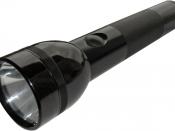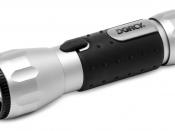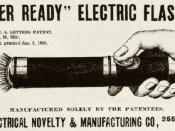Flashlights "can extend the working day for millions of people," observed Thijs Niemantsverdriet when he was discussing about the potential of these sturdy, portable lights. A flashlight is an essential tool to almost every human in the world. Before further research, I knew that a flashlight had either an incandescent, xenon, or LED, an acronym for Light Emitting Diode, bulb. Also, it can be powered by normal alkaline batteries, lithium ion batteries, or can be recharged. Wind-ups are also a popular trend with flashlights because when you wind up the handle or shake the flashlight and it lights up without being powered by batteries. In addition, they are usually made out of anodized aluminum or plastic and some are waterproof with an o-ring seal at the bottom to keep water out. They can vary in shapes and sizes; there are key-chain lights, common hand lights, headlights, and large searchlights. I chose the flashlight because it is very common and popular throughout the world.
However, how did this amazinginstrument develop through time and what are innovative technological advances in flashlights.
Currently, the common models of flashlights are made with a few ounces of aluminum or polymer. The bulbs, as afore mentioned, have LED lights that are commonly used for close up, time consuming activities. On the other hand, xenon lights are much better for longer ranges in short periods of time. In newer flashlights, there are 3-volt lithium ion batteries that improve the size and life span of normal lights. Also, there are 6-volt lights that are used daily task, but the 9-12 volt batteries are usually for heavy duty tasks or used in combat carbines.
New technological advances are emerging with the flashlight industry. A maker named Victorinox has created an LED flashlight that is integrated into their night vision...


